|
|
|
|
| Missing In Action (MIA) | Prisoners Of War (POW) | Unexploded Ordnance (UXO) |
| Chronology | Locations | Aircraft | Ships | Submit Info | How You Can Help | Donate |
|
 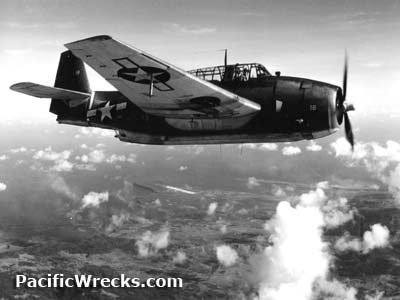 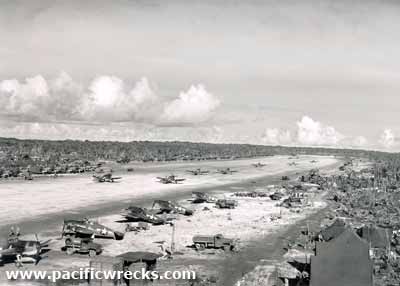 USN 1944 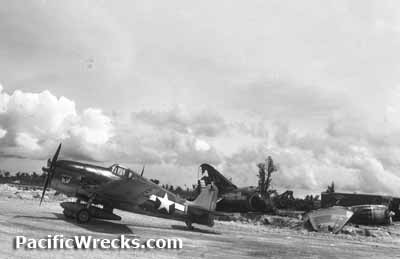 USN September 1944 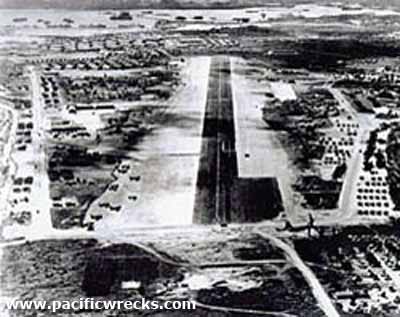 USN c1945  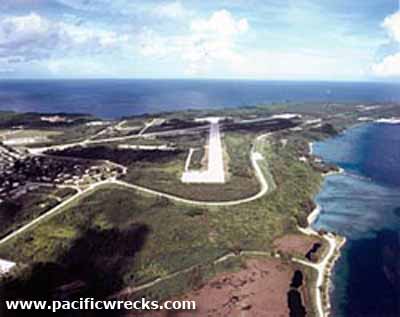 USN 1955 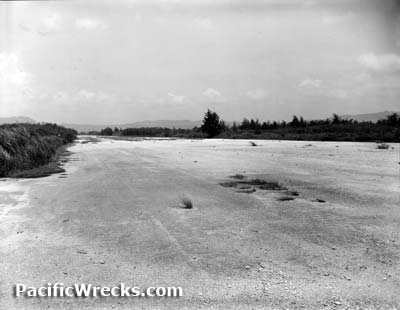 USN 1968 |
Location Orote Airfield is located on the Orote Peninsula on the western coast of Guam Island in the Southern Mariana Islands (Territory of Guam) in the United States of America (USA). Also known as Orote Point Airfield or Orote Field, NAS Orote or misspelled as Arote [sic]. Known to the Japanese as Guamu Dai Ichi (Guam No. 1). Borders Apra Harbor to the north and Agat Bay to the south. To the west is Orote Point and to the east is Sumay. Construction Built prior to the war, by the US Marine Corps detachment of 10 officers and 90 enlisted men when they arrived in Guam on March 17, 1921. The Marine unit constructed an air station near Sumay including a hangar for amphibious aircraft. In 1926, a new administration office was constructed which housed the squadron offices, sick bay, dental office, aerological office and guardhouse. In early 1927, the squadron departed for Olongapo. Only a handful of men remained here until September 23, 1928, when Patrol Squadron 3-M, consisting of 85 enlisted men and 4 to 6 officers, was assigned to Guam. Shortly thereafter, on February 24, 1931, the Naval Air Station closed as a cost-saving measure. Wartime History When the Japanese attacked Guam, they did not bomb the abandoned Naval Air Station. When they occupied the area, they built Orote Field. In Japanese known as Guamu Dai Ichi (Guam No. 1) using Korean and Guamian labor, and used the base until late July 1944. During April 1944, used by the Imperial Japanese Navy (IJN). As of June 1, 1944, Japanese air strength on Guam consisted of 100 Zeros and 10 J1N1 Irvings at Orote Airfield (Guam No. 1) and 60 x P1Y1 Ginga (Frances) at Agana Airfield (Guam No. 2). On February 23, 1944 U.S. carrier planes first targeted Orote Airfield, and other American raids soon followed. During the Battle of the Philippine Sea (Great Marianas Turkey Shoot), used by the Japanese carrier-based planes as a land based airfield to refuel and rearm. Also, Japanese planes from Orote Field were also used to strike the U.S. fleet. On June 19, 1944 U.S. carrier plane raids destroyed the landing fields, parked planes and shot down aircraft that managed to take off. During the battle, American pilots reported intense anti-aircraft fire around Orote Field. That day, fifteen damaged Japanese planes crashed at Orote Field. On June 20, 1944, numerous actions occurred in the immediate vicinity of Orote Field between American carrier airplanes and Japanese aircraft seeking refuge at Orote Field after flying from their carriers, or Japanese refueling and rearming to attack American carriers. Numerous dogfights took place in the air above Orote Field and numerous strikes by American airplanes destroyed Japanese facilities and airplanes on the ground. This denied the Japanese extensive use of this crucial airfield during the battle. Land Battle at Orote The Japanese assigned the defense of Orote Peninsula to the 54th Independent Guard Unit under command of Air Group Commander Asaichi Tamai. After American invasion on July 21, 1944, the 1st Provincial Marine Brigade under command of Lt. General Lemuel C. Shepherd fought its way through the Agat village to the base of Orote Peninsula. Here the Japanese had constructed an elaborate interlocking system of pillboxes, strong points and trenches. Regiments of the 1st Provisional Marine Brigade, the 4th and 22nd, fought their way through the area. Shortly before midnight on July 26, 1944, the Japanese trapped on the peninsula staged a suicide attack and were completely wiped out. The advancing Marines still met heavy Japanese resistance in the vicinity of the airfield, where the Japanese fought from caves and coconut bunkers. The peninsula was declared secure on July 29, 1944. It is estimated that the Japanese lost more than 3,000 men defending Orote Peninsula. After the battle, the wreckage of several Japanese aircraft were captured at Orote Airfield including G4M2 Betty 2095 , G4M2 Betty 12013 and J1N1 Irving. American Use Immediately put into use by Marine air power for close support missions during the liberation of Guam. This was accomplished by Marine Air Group (MAG) 21. By mid-November 1944, MAG-21, now commanded by Colonel Edward B. Carney, was an oversized group, having 12 squadrons based at Orote Field, 529 officers, 3,778 enlisted men and 204 aircraft. MAG-21 was shifted to Agana Airfield in 1945, as Orote Field had always been hampered by adverse crosswinds. The field was then used by the US Navy for repairing damaged aircraft. American Units Base at Orote VF-76 (F6F) September 1944 MAG 21 (F4U) July, 1944 - to Agana in 1945 USS Santee (F6F) landed at Orote August 1944 Today Orote Field was finally closed to all but emergency landings in 1946. Today, the cross-runway is used for C-130 touch-and-go flight training, and for helio-ops by Navy Seals. Much of the time the airfield is off-limits. The major runway runs from NW to SE and the secondary runway crosses the first and runs in a NE to SW direction. Limited tours of the airfield are available. F4U Corsair Abandoned at the airfield in a boneyard References Thanks to Jennings Bunn and Jim Long for additional information Contribute
Information Last Updated
|
December 1944 View in Google Earth |
| Discussion Forum | Daily Updates | Reviews | Museums | Interviews & Oral Histories |
|